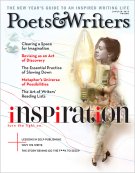For centuries, the common-place book—a personal compendium of quotations, notes, and other textual gleanings—was the mark of a literate mind. In late October, media developer Betaworks took a step toward updating the genre when it launched Findings (findings.com), an online community that lets users compile and share excerpts from books and websites, adding a collaborative dimension to a practice that once helped shape the intellectual development of figures such as as John Milton, Thomas Jefferson, and W. H. Auden.
Billed as a “social commonplace,” Findings allows members to sort through material by author, title, or source, and has plans in the works to enable the kinds of idiosyncratic organizational schemes emblematic of old-school commonplacing. Steven Johnson, author of Where Good Ideas Come From: The Natural History of Innovation (Riverhead Books, 2010) and a partner in the project, stresses the utility of the commonplace to writers as a tool for thinking. “You see the evolutionary paths of all your past hunches,” he said last year during a talk at Columbia University, “the ones that turned out to be red herrings; the ones that turned out to be too obvious to write; even the ones that turned into entire books. But each encounter holds the promise that some long-forgotten hunch will connect in a new way with some emerging obsession.”
Four years in the making, Findings is the product of what Johnson calls a “slow hunch,” joining a swelling group of digital endeavors that are placing new emphasis on those aspects of reading that lie beyond the covers of a single book or the confines of an individual library. It’s tempting to characterize this shift as the displacement of a tradition of solitary communion with an author by a noisy new collective engagement. But reading has always been social; technology only inflects it in curious ways. And just as changing media go hand in hand with evolving practices, some of these new modes of reading can feel decidedly familiar. Fittingly, one of the first quotations collected on Findings, from The Case for Books: Past, Present, and Future (PublicAffairs, 2009) by librarian and book historian Robert Darnton, suggests precisely this sort of recapitulation: “Unlike modern readers, who follow the flow of a narrative from beginning to end, early modern Englishmen read in fits and starts and jumped from book to book. They broke texts into fragments and assembled them into new patterns by transcribing them in different sections of their notebooks. Then they reread the copies and rearranged the patterns while adding more excerpts. Reading and writing were therefore inseparable activities.”
Indeed, certain forms of social reading are recognizable as digital heirs to the literary salons and book clubs that sprang up with the proliferation of print. Whether the focus is on experiments in mass simultaneity—as with the Twitter-based 1book140 project (which, under the aegis of the Atlantic, aims to be the world’s largest book club), or in more intimate forums, as with BookGlutton (www.bookglutton.com), which connects readers “inside digital books” through shared annotations and bookmarks—literature is more than ever a medium for interpersonal connection. The collective wisdom of the crowd itself can be leveraged—for better or worse—through the user-generated content on platforms such as Goodreads (www.goodreads.com), or via recommendations pulled from blogs by ReadFeeder (www.thereadfeeder.com).
The movement of reading away from the printed page and onto the screen has led new e-reading devices to incorporate social access into the technology itself. Amazon’s Kindle now (optionally) highlights passages that have drawn significant reader attention while Kobo—the first e-book vendor to develop a social-reading app—has upped the ante by releasing Pulse, a platform that features in-text comments, reviews, and recommendations collected in real time from readers. Subtext offers a similar social-reading experience, describing itself as “a community in the pages of the book.” The app, which works across various e-book platforms (although not, as of this writing, with the Nook or Kindle), integrates commentary and digital extras from authors, publishers, and, of course, readers, encouraging users to contribute their own content by offering game-style “points” that can be redeemed for additional “expert” annotations.
Subtext and similarly ambitious social-reading schemes are keeping digital books in flux, spurring readers to continually revisit their pages. Just as the commonplace books that inspired Findings were made possible by one kind of technological revolution—the widespread availability of cheap paper—a new sort of abundance, prompted by a more recent technological revolution, is shifting practices once again, and books are being recast as relationships. Digital literature is beginning to demonstrate how books, rather than being static products, can be endlessly unfolding processes.
Adrian Versteegh is a Henry MacCracken fellow at New York University.








